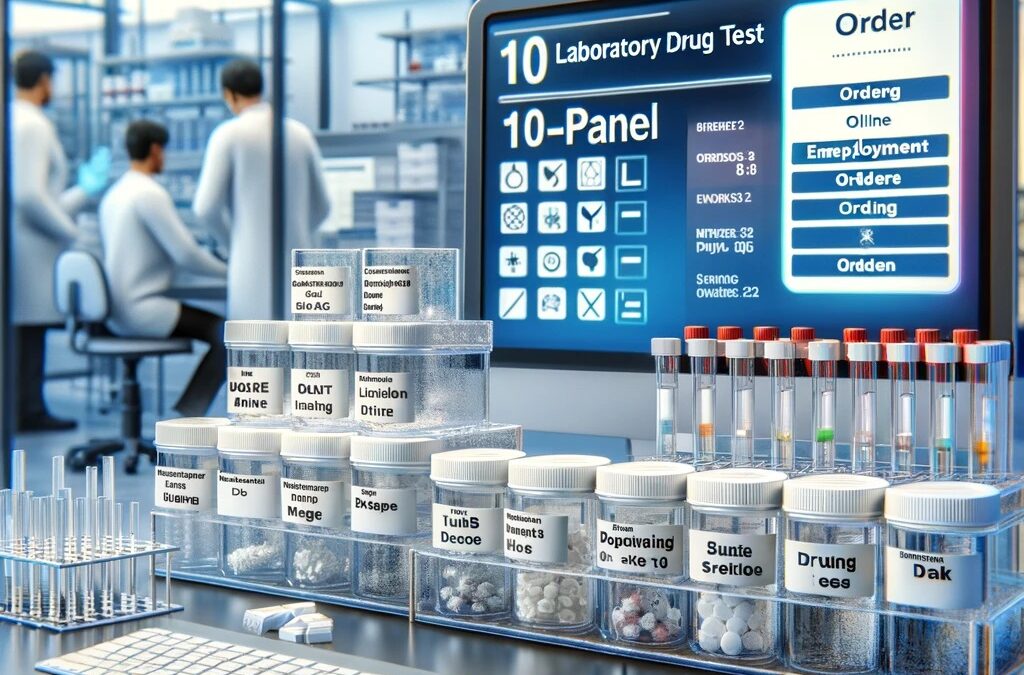A 10-panel urine drug test is a common method used to screen for the presence of various drugs and their metabolites in the body. This type of test is frequently used in workplaces, law enforcement settings, and in medical practices. Here’s a comprehensive look at how it works:
Introduction
The 10-panel urine laboratory drug test is designed to detect ten different types of substances. It’s a more extensive version of the simpler 5-panel test and is used to ensure individuals are not using illegal drugs or misusing prescription drugs.
The Substances Tested
The standard 10-panel drug test screens for the following substances:
- Amphetamines (including Methamphetamine)
- Barbiturates
- Benzodiazepines
- Cocaine
- Marijuana (THC)
- Methadone
- Methaqualone
- Opiates (including Heroin, Codeine, and Morphine)
- Phencyclidine (PCP)
- Propoxyphene
The Testing Process
1. Collection of Urine Sample: The process begins with the collection of a urine sample from the individual being tested. This is usually done under controlled conditions to prevent tampering or contamination. Measures may include a same-gender observer, dyed toilet water, and restrictions on bringing personal items into the testing area.
2. Initial Screening: Once the sample is collected, it undergoes an initial screening at the laboratory. This is typically an immunoassay test, a biochemical test that uses antibodies to detect the presence of specific drugs or their metabolites. Immunoassays are highly sensitive and can quickly indicate whether certain substances are present in the urine.
3. Confirmation Test: If the initial screening indicates the presence of drugs, a confirmation test is conducted. This test is more specific and accurate, often using techniques like Gas Chromatography-Mass Spectrometry (GC-MS) or Liquid Chromatography-Tandem Mass Spectrometry (LC-MS/MS). These methods can accurately identify and quantify the presence of specific drugs and their metabolites.
4. Review by a Medical Review Officer (MRO): If the confirmation test is positive, the results are reviewed by a Medical Review Officer, a licensed physician trained in substance abuse testing. The MRO may contact the individual to determine if there is a legitimate medical explanation for the positive result, such as a prescription medication.
Interpreting Results
Negative Results
A negative result indicates that the substance or substances in question were not detected at the cutoff levels established for the test.
Positive Results
A positive result means that the substance was detected above the cutoff level. It’s important to note that a positive test doesn’t necessarily indicate impairment or the timing of drug use. Certain substances can be detected long after their effects have worn off.
Factors Affecting the Test
• Hydration: Diluted urine samples may affect the concentration of drugs, potentially leading to false negatives.
• Metabolism: Individual metabolic rates can influence how long a drug remains detectable.
• Quantity and Frequency of Use: These can impact the detectability of drugs.
Legal and Ethical Considerations
The use of urine drug testing raises several legal and ethical considerations, especially regarding privacy, the potential for false positives, and the handling of test results.
Conclusion
The 10-panel urine drug test is a valuable tool in various settings for detecting the use of common drugs. Its effectiveness, however, is dependent on the correct and ethical application of testing procedures and the accurate interpretation of results. It’s crucial that such tests are conducted with respect for individuals’ rights and privacy, and that results are used responsibly and ethically.


